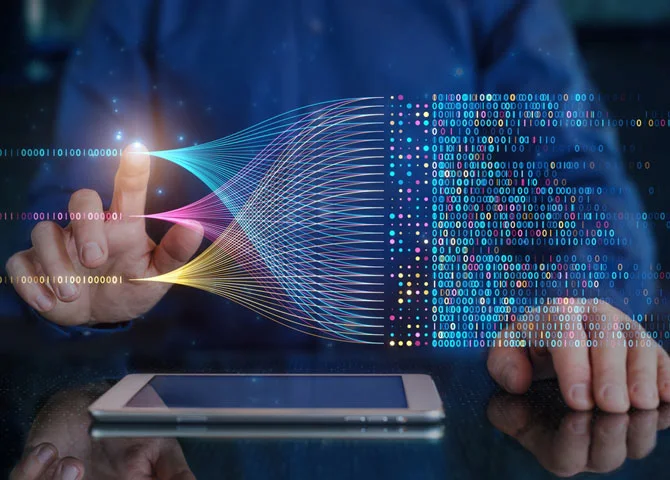AI-driven automation can be used to streamline complex workflows and enhance efficiency. When paired with no-code web app and workflow development, it allows non-technical users to create sophisticated workflows, decreasing dependency on traditional coding expertise. Here are five different applications for web app design AI.
1. Natural Language Processing Integration
Natural language processing (NLP) is used in many of today’s most helpful websites, applications, and programs, from ChatGPT to Siri and Cortana.
If you’re not leveraging the power of NLP to improve the user experience of your web app and tailor it to the end user, then you’re missing out.
Natural language processing “provides machines with the ability to process what is said [input], structure the information received, discover the necessary response, and then respond in the language that a user understands [output].”
NLP encompasses much more than just chatGPT or voice assistants, as Daffodil notes. Here are several other applications that may be more germane to workflow creation:
- Machine translation
- Conversational user interface
- Text prediction
- Sentiment analysis
- Text classification
- Text generation
- Spell check
- Speech recognition
- Character recognition
- Info extraction
- …And more!
Machine Learning Algorithms for Personalization
While not all business tasks are suitable for machine learning (ML) automation, you may be able to markedly improve the efficiency and personalization of those that are by incorporating ML algorithms into your workflow builds. ML algorithms can tailor content, recommendations, and even entire user interfaces to individual preferences, thereby improving the quality of user journeys.
Computer Vision for Image & Video Processing
If your workflows involve the interpretation of images and videos (such as gathering user credit card or insurance card information from images or parsing out info from ID pictures), then incorporating computer vision into your workflows is a must.
Computer vision trains machines to “analyze thousands of products or processes a minute, noticing imperceptible defects or issues”.
Predictive Analytics for Data-Driven Insights
Predictive analytics is a branch of data analytics that at its core “attempts to answer the question, ‘What might happen next?’”. More specifically, it’s defined by Google as “the process of using data to forecast future outcomes [using] data analysis, machine learning, artificial intelligence, and statistical models to find patterns that might predict future behavior.”
Using predictive analytics to analyze both historic data and current data allows businesses that utilize generative AI app builders to forecast trends and user behaviors seconds, days, or years into the future with a great deal of precision. As you can imagine, this has far-reaching use cases and benefits for custom AI web app design and workflow development.
Chatbots & Virtual Assistants
Those searching for information on how to build an AI app or automated workflow would be remiss not to include a virtual assistant or chatbot. Providing end users and potential customers with quick and direct answers to questions or sending them helpful resources are just a few use cases for these AI-powered customer service and support powerhouses, which can dramatically improve your customer experience.
Build Custom No-Code Web Apps With PerfectApps
Discover our custom no-code web app solutions today!
Learn more about how to build your first workflow here.





